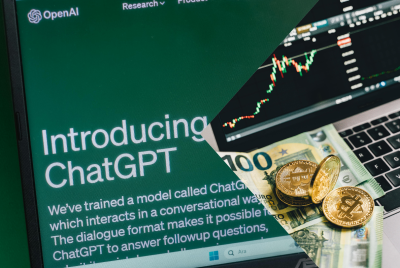AI Security Strategies CISOs Can't Ignore in 2025
As cyberattacks grow more sophisticated and AI-driven, CISOs must rethink their defences with red teaming, explainability, and governance

Artificial intelligence has become central to enterprise operations, and security leaders are already seeing the consequences. According to Arctic Wolf's 2025 State of Cybersecurity Trends Report, 70 percent of organisations experienced at least one significant cyberattack in 2024. As AI reshapes both business functions and attacker tactics, the pressure on CISOs in 2025 is intensifying.
Threat actors are already exploiting AI to accelerate their campaigns. Automated scans now reach up to 36,000 per second, and AI-generated phishing and polymorphic malware are slipping past traditional security controls. Internally, poorly monitored AI systems have caused data leaks, introduced bias, and even created new avenues for attack. CISOs can no longer depend on legacy methods built for a different threat landscape.
Regulatory frameworks are evolving in parallel. The introduction of the EU AI Act, enhanced UK NIS2 guidelines, and sector-specific AI standards in finance and healthcare mean CISOs must now manage both cyber risk and compliance within AI environments. Responsibility now covers protecting against breaches and aligning with these emerging mandates.
Meeting these challenges calls for a decisive and forward-thinking approach. The seven AI-driven strategies we will outline next reflect the priorities CISOs must embrace in 2025, from stress-testing defences through AI red teaming to integrating intelligent agents into SaaS environments and establishing firm guardrails around generative AI. Together, they chart a path toward stronger resilience and smarter control over emerging threats.
1. Make AI Red Teaming a First-Line Defence
The widespread adoption of artificial intelligence has introduced attack surfaces that traditional testing often fails to detect. Models are susceptible to data poisoning, prompt injection, and adversarial inputs, each capable of undermining decisions or exposing sensitive information. As AI models and agents adoption accelerates, AI red teaming is becoming a critical pillar of enterprise security strategy.
AI red teaming simulates real-world attacks to uncover how models respond under pressure. It reveals failure modes, leakage risks, and misuse pathways that would otherwise remain hidden, providing CISOs with actionable insight into where systems are vulnerable and how to harden them. Solutions such as Mend.io AI Red Teaming enable security teams to run large-scale simulations, stress-testing AI systems across scenarios, and guiding remediation.
In 2025, CISOs should plan to deploy AI red teams as a fundamental part of responsible AI deployment.
2. Incorporate Explainable AI into Security Operations
As AI takes on a larger role in detecting threats and responding to incidents, the question of trust becomes unavoidable. CISOs are increasingly being asked to explain not only what an AI system decided but why it made that decision. Without that clarity, security teams risk misinterpreting alerts, overlooking bias, or failing compliance audits.
Explainable AI, or XAI, addresses this by making the inner workings of models more transparent. In practice, CISOs can require vendors to provide explainability reports, include interpretability metrics in model validations, and train analysts to scrutinize AI‑generated decisions. In security operations, this transparency allows teams to validate automated actions and correct flawed assumptions before they escalate.
In 2025, embedding explainability into AI security workflows will help CISOs not just address oversight demands but also respond to incidents with greater speed and precision.
3. Strengthen Data Provenance and Integrity
The quality of an AI system depends directly on the reliability of the data it learns from. Attackers have begun targeting this foundation by introducing manipulated or poisoned data into pipelines, compromising accuracy and increasing the risk of flawed decisions. This makes protecting the integrity of data streams and training sets a critical priority for CISOs.
Preventing these risks starts with visibility and control over the entire data pipeline. CISOs can implement strong lineage practices to track where data originates and how it moves through systems, audit data sources regularly to verify trustworthiness, and incorporate tamper detection on live feeds. These measures ensure that models are trained and operate on clean, validated inputs, reducing the chance of silent but serious corruption. By securing the data foundation, organisations can prevent weaknesses before they reach the model itself.
4. Deploy AI Agents for SaaS Security
SaaS applications have become indispensable to modern enterprises, but their sprawl has created a web of access points and permissions that traditional monitoring struggles to keep up with. Shadow IT, misconfigured accounts, and unchecked third-party integrations all contribute to a growing attack surface in the cloud. In 2025, many CISOs are turning to AI agents to regain visibility and control over their SaaS ecosystems.
These intelligent agents continuously analyse SaaS activity, identify anomalies in user behaviour, and flag risky configurations in real time. Unlike static policy enforcement tools, AI agents adapt to changing usage patterns and can autonomously recommend or even implement corrective actions. For organisations that rely heavily on platforms like Salesforce, Slack, or Google Workspace, this level of dynamic oversight is becoming critical to managing risk without disrupting productivity.
Reco's AI agents for SaaS security exemplify how this approach is being applied effectively. Designed to operate across complex cloud environments, Reco's agents monitor permissions, detect suspicious behaviours, and help prevent sensitive data from slipping through the cracks. As SaaS adoption deepens, CISOs who invest in intelligent, adaptive monitoring are better positioned to keep their environments secure.
5. Build In‑House Guardrails for Generative AI
Generative AI is now embedded in daily workflows across enterprises, powering everything from content creation to customer service. Gartner projects that by 2025, more than 75 percent of employees will interact with generative AI tools as part of their routine tasks. Yet this rapid adoption has far outpaced formal policy, leaving organisations vulnerable to prompt injections, data exposure, and unvetted outputs that can introduce significant risk.
Building in‑house guardrails for generative AI is becoming a priority for CISOs who want to harness its potential without compromising security. This involves more than drafting acceptable use policies. Leading organisations are implementing monitoring systems that track prompts and responses for sensitive data, defining clear access controls, and training staff to recognize misuse. These measures help reduce the risk of sensitive information being shared or misused through AI interactions.
6. Develop AI-Specific Incident Response Plans
A recent Gartner survey found that fewer than 20% of organisations have updated their incident response plans to account for AI-related threats, even as these incidents become more likely. As AI systems become deeply embedded in critical business functions, CISOs must prepare for situations where models fail, behave unpredictably, or are deliberately compromised.
AI-specific incidents can take many forms. A generative AI chatbot may inadvertently expose customer data through manipulated prompts, or an adversarial attack could corrupt a machine learning model's output and disrupt operations. Unlike traditional breaches, these events often require validation of model integrity and forensic analysis of training or input data alongside standard containment procedures.
CISOs can strengthen readiness by reviewing existing playbooks for gaps, assigning clear ownership of AI incident response, and defining communication plans for internal teams and external stakeholders. Taking these steps today enables organisations to respond decisively when AI systems are exploited or malfunction and maintain trust in their operations.
7. Invest in Continuous AI Governance and Oversight
Managing AI security is not just about fixing immediate vulnerabilities. As models evolve, regulations change, and usage expands, CISOs need to establish governance frameworks that oversee AI systems throughout their entire lifecycle. In 2025, continuous governance has become an essential part of maintaining control over a fast‑changing landscape.
This means creating formal oversight processes that monitor security, privacy, and compliance on an ongoing basis. CISOs can lead efforts to document and update model inventories, audit access controls and outputs regularly, and track regulatory developments to adjust policies as needed. Cross-functional working groups and governance committees are also effective in keeping stakeholders aligned and informed.
Embedding governance into everyday operations enables organisations to detect emerging risks early, maintain regulatory readiness, and sustain confidence in their AI systems as they scale. By treating governance as a living process, CISOs can ensure their AI investments remain both effective and accountable over time.
Conclusion
AI is rewriting the rules of enterprise security, and the pace of change is only accelerating. The strategies outlined above offer CISOs a clear framework for addressing emerging risks while making the most of AI's potential. By acting decisively and maintaining a long-term view, security leaders can turn today's challenges into tomorrow's competitive advantage. Staying ahead will require not only adopting these strategies but also fostering a culture of continuous learning, cross-team collaboration, and adaptability to evolving threats and regulations.
© Copyright IBTimes 2025. All rights reserved.





















